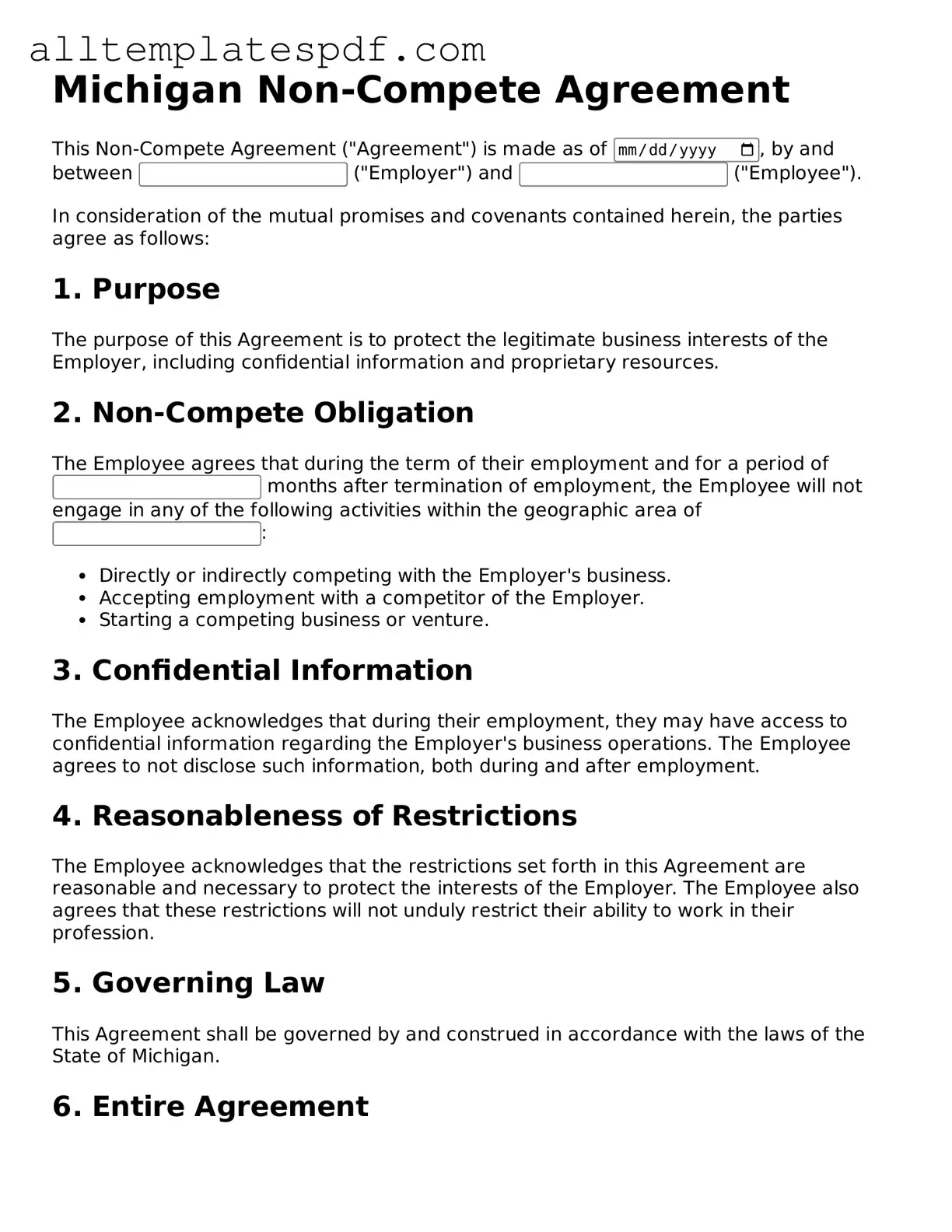Filling out a Michigan Non-compete Agreement form can be a daunting task. Many individuals make common mistakes that can lead to misunderstandings or even legal complications. Being aware of these pitfalls can help ensure that the agreement serves its intended purpose without unnecessary issues.
One frequent mistake is not reading the entire document thoroughly. It’s easy to skim through the terms, but every clause has significance. Understanding the implications of each section is crucial. Take the time to read the agreement carefully, as this can prevent future disputes over what was agreed upon.
Another common error involves failing to specify the duration of the non-compete. The agreement should clearly state how long the restrictions will be in effect. Without this information, the agreement may be deemed unenforceable, leaving both parties uncertain about their rights and obligations.
Many individuals also overlook the importance of defining the geographic scope of the non-compete. It is essential to outline the specific areas where the restrictions apply. A vague geographic scope can lead to confusion and potential challenges in enforcing the agreement.
Additionally, some people neglect to consider the reasonableness of the restrictions. Non-compete agreements must be fair and not overly burdensome. If the terms are too restrictive, a court may refuse to enforce them. It’s vital to strike a balance that protects the business while allowing individuals to pursue their careers.
Another mistake is not consulting with an attorney. While it may seem unnecessary, having legal guidance can provide clarity and ensure that the agreement complies with Michigan laws. An attorney can help identify potential issues and suggest revisions that can strengthen the document.
Lastly, individuals often forget to keep a copy of the signed agreement. This is a crucial step that should not be overlooked. Having a copy ensures that both parties have access to the terms and can refer back to them if questions or disputes arise in the future.
By being mindful of these common mistakes, individuals can fill out the Michigan Non-compete Agreement form with confidence. Taking the time to understand the document can lead to a smoother process and a more secure future.
